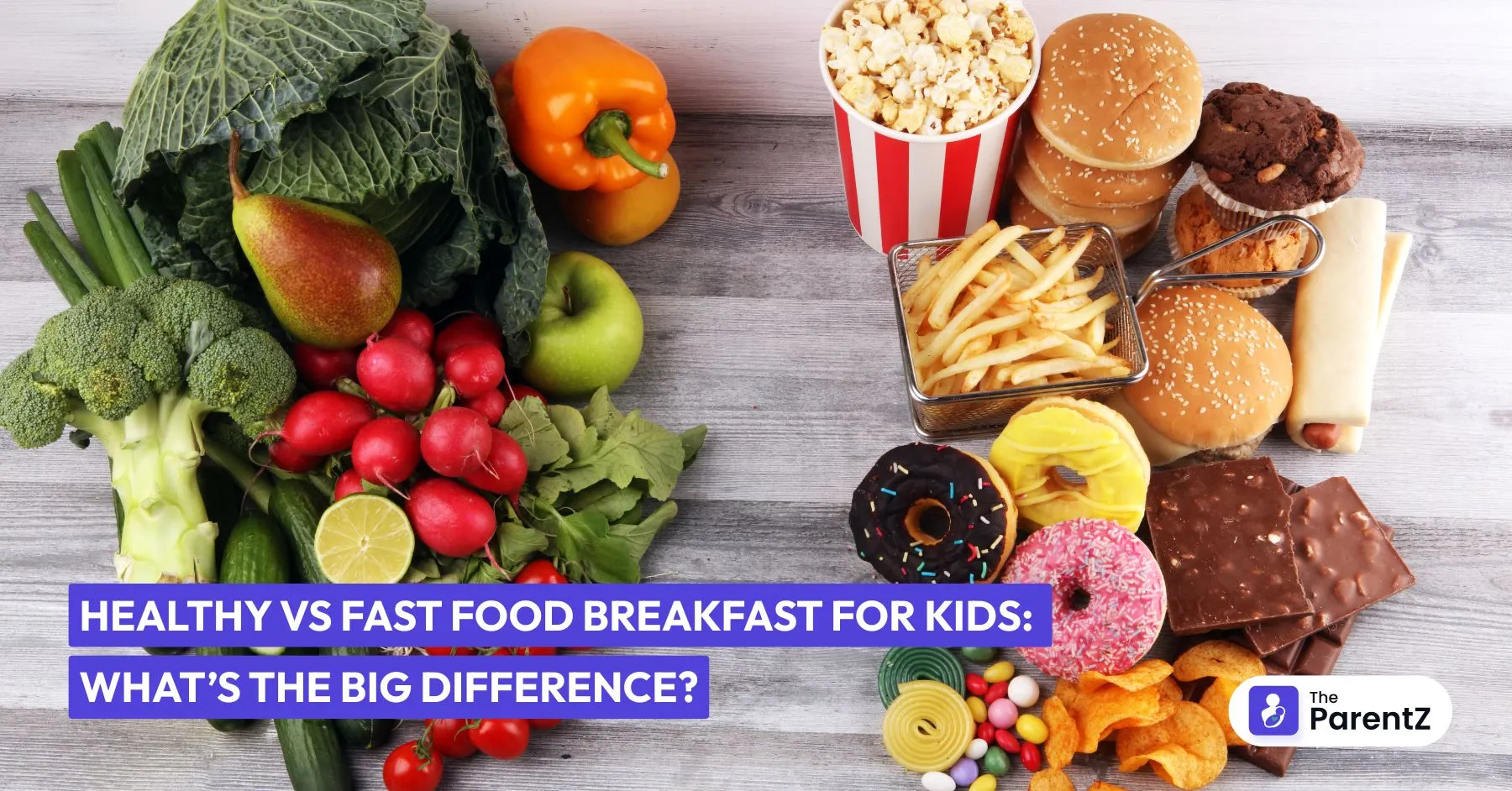A Morning Meal That Sets the Tone
Mornings can be chaotic, especially with kids. Between waking up late and scrambling to make it to school, a fast food breakfast might seem like the easiest solution. But before you pull up to the drive-thru, it’s important to ask: What is this meal doing for your child’s health, energy, and focus?
The difference between a healthy breakfast and a fast food one might not seem dramatic at the moment—but over time, it can shape everything from your child’s learning ability to their long-term well-being.
Let’s explore what truly separates a healthy breakfast from a fast food one—and why it matters.
1. Nutrient Density vs. Empty Calories
Healthy Breakfasts:
- Rich in fiber, protein, healthy fats, and complex carbs
- Include whole foods like fruits, oats, eggs, nuts, whole grains
- Provide sustained energy and fullness
Fast Food Breakfasts:
- High in refined carbs, added sugars, unhealthy fats, and sodium
- Often made with processed meats, white breads, syrups, and fried ingredients
- Lead to quick energy spikes followed by crashes
The Impact:
A study in The American Journal of Clinical Nutrition found that children who ate high-protein, high-fiber breakfasts had better concentration and fewer mid-morning cravings than those who ate sugary, low-nutrient meals.
2. Blood Sugar Balance vs. Sugar Spikes
Fast food items like syrupy pancakes or sugary muffins cause:
- Rapid blood sugar spikes, followed by a crash
- Mood swings, fatigue, irritability
- Poor attention span in school
Healthy options like whole grain toast with peanut butter or oatmeal with fruit support:
- Steady energy release
- Balanced mood and cognitive function
- Better appetite regulation throughout the day
Fact: The Journal of Pediatrics reports that children who eat balanced breakfasts perform better in cognitive tasks and standardized tests.
3. Gut Health and Immunity
Healthy meals rich in fruits, veggies, and whole grains support the gut microbiome, which:
- Boosts the immune system
- Reduces inflammation
- Enhances digestion
Fast food, on the other hand, is low in fiber and loaded with preservatives that can:
- Disrupt gut bacteria
- Lead to constipation and bloating
- Increase risk of long-term issues like obesity and Type 2 diabetes
4. Portion and Calorie Control
A fast food breakfast combo can contain:
- 600–900 calories
- Excess salt, sugar, and saturated fat
- Enough sodium for an entire day
A healthy breakfast (like a veggie omelet with toast and fruit) offers:
- Balanced calories (300–500)
- Nutrients without excess sugar or fat
- Better portion control
This balance helps maintain a healthy weight and metabolism.
5. Habit Formation: Shortcuts vs. Lifelong Wellness
When kids grow up eating fast food daily, it becomes a pattern. Their taste buds adapt to:
- Salty, sugary, high-fat foods
- A dislike for vegetables and whole foods
- Cravings for convenience over nutrition
On the other hand, starting the day with nutrient-rich meals teaches:
- Healthy food choices
- A respect for how food fuels the body
- The foundation for lifelong well-being
Fact: Research in Public Health Nutrition shows that children’s eating habits formed before age 10 often track into adulthood.
Simple Healthy Breakfast Swaps
| Fast Food Item | Healthy Swap |
| Sausage sandwich | Whole-grain toast + scrambled egg + veggies |
| Hash browns | Baked sweet potato or boiled corn |
| Pancakes with syrup | Oats with banana and honey |
| Sugary cereal | Greek yogurt with berries and chia seeds |
| Sweetened juice | Water, milk, or fresh smoothie |
Conclusion: The Power of One Meal
A healthy breakfast doesn’t need to be fancy, it just needs to be thoughtful. While fast food may save a few minutes, it can cost your child more in focus, mood, and health.
The real difference?
Fast food fills the stomach. Healthy food fuels the mind, body, and future.
Even a few simple changes can shift your child’s day—from sluggish to strong, distracted to sharp.








Be the first one to comment on this story.